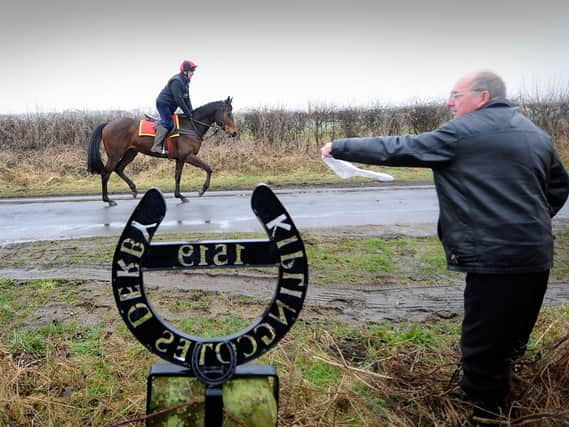Kiplingcotes derby: All you need to know about Yorkshire's ancient horse race


But two riders and their mounts intend to walk the Yorkshire Wolds course today to ensure the traditional event can still take place.
Fascinating facts about the Kiplingcotes derby
- It began in 1519, making it the oldest horse race in England. It's been run almost every year since then, and begins in the village of Etton. The course is four miles across farm tracks and fields.
Advertisement
Hide AdAdvertisement
Hide Ad- It's only been cancelled twice in its recorded history. The first was in 1947, when the terrible winter of that year saw the course covered in huge snow drifts. More recently, it was called off in 2001 during the foot and mouth outbreak. Former winner Stephen Crawford, who will walk the course today, also performed the duty in 2001. In 1947, it was current trustee Guy Stephenson's uncle Fred who had the honour, although he was forced to ride through 4ft drifts.
- The winner receives the Kiplingcotes Plate and £50.
- Any horse can enter. A quirk of the race is that former racehorses are often entered under fake names, but any type of mount can take part - from Clydesdales to ponies and hunters.
- Nobody knows who will be racing until the jockeys arrive on the day itself. Many are riders from the local equestrian community who simply fancy their chances, and outsiders have been known to win.
- There's only one bookie. Because Chris Johnson doesn't know anything about the horses until race day, he has to estimate their condition and pedigree before calculating his odds.
Advertisement
Hide AdAdvertisement
Hide Ad- Horse have been known to die during the tough race. In 1997, the winning mare, Sunny, collapsed and died immediately after finishing.
- Riders as old as 74 have ridden in the derby.
- It's been called 'the Brigadoon of racing' because the course will not be used again until the following year. Brigadoon is a mythical Scottish village that only appears for one day every 100 years.